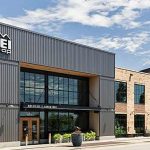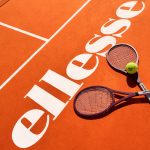Adidas Group has hired an investment bank to consider options for its flagging TaylorMade-Adidas Golf business, including possibly divesting its Adams and Ashworth brands.
The company has hired the bank as part of a new and much more comprehensive turnaround plan Adidas Group CEO Herbert Hainer laid out in the company's second quarter earnings calls just days after the German sporting goods giant announced it had sold its Rockport comfort shoe business as part of a plan to focus on its core athletic business.
The golf headline crowded out the much more encouraging news of robust growth in the Group's core footwear and apparel businesses. Sales of Adidas and Reebok branded products grew 8 and 6 percent respectively in currency-neutral terms, easily offsetting the 26 percent decline at TaylorMade-Adidas. In euro terms, Group revenues grew 15 percent.
The growth at Adidas was driven by double-digit sales increases at Adidas Originals and Adidas NEO as well as mid-single-digit growth in the training category. Currency-neutral Reebok sales were up 6 percent versus the prior year as a result of double-digit sales increases in the training, running and studio categories as well as mid-single-digit growth in Classics.
“We have said all along that our new strategy ‘Creating the New’ will already show first positive results this year,” said Hainer. “The second quarter is proof positive for that.”
Double-digit growth in Western Europe, Greater China and MEAA
Currency-neutral sales of the Adidas and Reebok grew in the double digits in Western Europe, Greater China and MEAA. Revenues in Western Europe increased 12 percent on a currency-neutral basis, due to double-digit sales growth at Adidas and high-single-digit growth at Reebok.
Currency-neutral sales in North America remained stable, as sales growth at Adidas was offset by declines at Reebok.
In Greater China revenues were up 19 percent on a currency-neutral basis, reflecting double-digit top-line growth at Adidas and Reebok. Currency-neutral sales in Russia/CIS decreased 14 percent due to declines at both Adidas and Reebok. Further store closures contributed to this development. In Latin America, revenues grew 9 percent on a currency-neutral basis with double-digit sales growth at Reebok as well as high- single-digit increases at Adidas.
In Japan, sales were down 6 percent on a currency-neutral basis as sales growth at Reebok was more than offset by declines at Adidas which were mainly related to the non-recurrence of last year’s World Cup related revenues.
Sales in MEAA grew 16 percent on a currency-neutral basis, reflecting double-digit top-line growth at both Adidas and Reebok.
At Golf, all hands on deck
Revenues in Other Businesses were down 14 percent on a currency-neutral basis in the second quarter, as declines at TaylorMade-Adidas Golf obscured growth at Reebok-CCM Hockey, where sales grew 31.3 percent (17.5 percent c-n) to €80 million ($88 mm).
TaylorMade-Adidas Golf revenues fell 12.0 percent (25.5 percent c-n) to €239 million ($264 mm) from the second quarter of 2014, or well below Adidas' expectations.
Last year Adidas postponed most of its golf product launches to give retailers a chance to sell through their inventory with the expectation that growth would resume this year. But while a decline in golf rounds being played recently reversed, Hainer said the situation at the point of sale remains more challenging than we had initially projected.”
“At the same time, our two major product introductions, the R15 and the AeroBurner, did not resonate as well with the golf consumer as we would have hoped,” he added. “As a result of these developments, our sell-through rates were not as strong as expected, leading to earlier and more pronounced promotional activity, which is clearly reflected in the 26 percent top-line decline during the second quarter, as well as significant margin pressure.”
In response to the persisting challenges, Hainer disclosed that Adidas has engaged an investment bank to weight options for the company’s golf business – and particularly – in the Adams and Ashworth brands. In the meantime, it has drawn up and begun executing a new turnaround plan that calls for renegotiating supplier contracts, redesigning products to lower manufacturing costs, raising list prices and reallocating marketing dollars to boost profits at the golf business.
“In the past, our pricing has too often been driven by historical levels, rather than robust consumer research and in-depth analysis to test price-point decisions,” Hainer said. “As a result of that, TaylorMade's core portfolio of drivers is priced below competitors’ product, despite still being the clear market leader in metal woods.”
TaylorMade will also reduce how frequently it launches product to ensure it is not devaluing dealer inventory and to save on marketing costs. The company already expects to save €4-to-€6 million by reducing the cost of manufacturing a metal wood club slated to launch this September. In addition, TaylorMade will cut marketing in lower priority markets and shift spending toward top-tier products and sharpening our portfolio of players. All these efforts are expected to result in annual savings in the “mid-doubles-digit-million-euro range.
“The current performance has shown that we need to go much deeper in order to bring TaylorMade-Adidas Golf back on track,” said Hainer.
Lower margins
Group gross margin decreased 90 basis points to 48.3 percent, as the positive effects from a more favorable pricing and channel mix at Adidas and Reebok were more than offset by higher input costs, negative currency effects as well as lower product margins at TaylorMade-Adidas Golf.
Other operating expenses grew 13 percent to €1.720 billion ($1.9 bn), reflecting an increase in sales and marketing working budget investments as well as higher operating overhead costs. However, as a percentage of sales, other operating expenses declined 0.6 percentage points to 44.0 percent. Group operating margin dipped 40 basis points to 6.0 percent from the prior year. Net income from continuing operations increased 2 percent to €146 million ($161 mm).
Group inventories from continuing operations increased 5 percent (+3 percent c-n) compared to June 30, 2014, reflecting the Group’s growth expectations.
Full year guidance confirmed
The Adidas Group still expects sales to increase at a mid-single-digit rate on a currency-neutral basis in 2015, driven by ongoing momentum at both Adidas and Reebok, which are on track to grow at a double-digit rate in Western Europe, Greater China and MEAA.
Gross margin is forecast at 47.5-to-48.5 percent, compared with 47.6 percent in 2014 as more favorable pricing and product mix at both Adidas and Reebok and other factors are largely offset by currency movements in Russia/CIS and other emerging markets and lower margins at TaylorMade-Adidas Golf.
The operating margin, excluding goodwill impairment for the Adidas Group, is forecast to reach 6.5-to-7.0 percent, compared with 6.6 percent last year.
“2015 will be a successful year for the Adidas Group,” said Hainer. “With a strong order book on hand, we are very confident that the robust momentum of our core brands Adidas and Reebok will continue throughout the second half of the year and fuel the targeted top- and bottom-line growth.”















